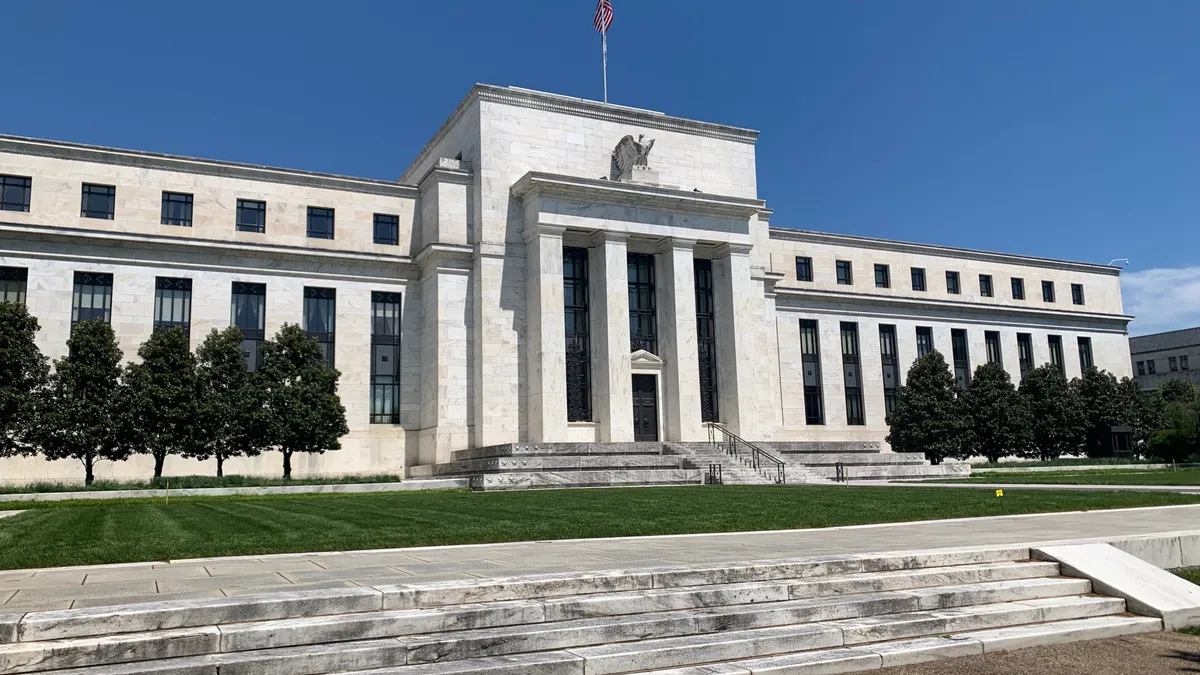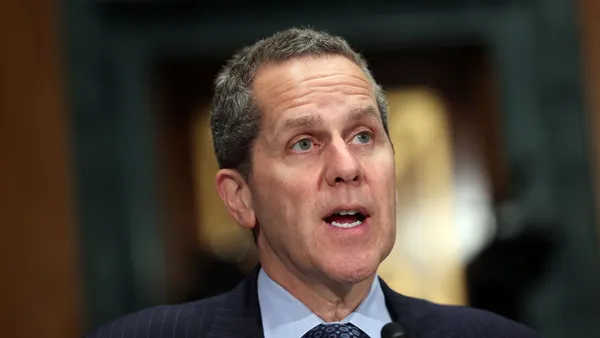Dive Brief:
- The Federal Reserve on Monday proposed a revamp of the Community Reinvestment Act (CRA), which will be open for comment for 120 days. The move comes four months after the Office of the Comptroller of the Currency (OCC) pushed its own final rule amending the 1977 anti-redlining law — without support from the Fed or the Federal Deposit Insurance Corp. (FDIC).
- The Fed would evaluate banks' retail lending and community development by size, but in a departure from the OCC's plan, wants separate tests for each. The central bank would also expand the community development activities for which banks can receive CRA credit. Under the Fed plan, smaller banks can opt out of the separate tests and abide by current CRA rules — or they can comply with the new framework and choose to be evaluated only on their retail side.
- Under the Fed plan, the assessment area for online lenders without branches would be nationwide, rather than localized around headquarters.
Dive Insight:
Banks' CRA compliance is now evaluated based on a formula that includes loans to homebuyers and small businesses, along with the number of branches in lower-income areas. Banks that score poorly can be restricted from merging or opening new branches.
Where the OCC asked banks to provide new data points for CRA evaluation, the Fed hedges toward creating new metrics that rely on existing data.
The OCC's revamp drew flak for being overly reliant on a single test score, and for the weight it gives to the amount banks invest in lower-income areas. For example, a bank could be compliant through few large projects rather than its work in small-dollar lending to residents and small businesses. The Fed plan would offer more CRA credit for those individual loans than the OCC's, the central bank suggested.
The Fed is asking the public for input on how to incentivize banks to invest in minority depository institutions, community development financial institutions and geographic areas, such as Native American communities, that lie outside of typical CRA assessment areas. The Fed also wants feedback on whether banks should receive CRA consideration for operating branches in banking deserts.
Small, rural banks would get leeway to define their assessment areas, and would not have to include in their assessment areas the parts of counties where they have no branches or offices.
The Fed also wants feedback on which asset threshold — $750 million or $1 billion — should be used to delineate small and large banks in terms of their CRA requirements.
The Fed's board of governors voted 5-0 to issue the proposal.
"It has been 25 years since the last significant revision to the CRA regulation, so it is important to get reform right," Federal Reserve Gov. Lael Brainard said in a statement. "We must ensure that CRA is a strong and effective tool to address ongoing systemic inequities."
Although the OCC and FDIC initially issued suggestions to update the CRA in December, the Fed didn't sign on. And, it turned out, the FDIC declined to join the OCC in issuing a final rule in May that was seen as rushed. (The OCC's then-chief, Joseph Otting, announced his resignation the following day.)
Otting's successor, Acting Comptroller Brian Brooks, struck an appreciative tone for what the Fed plan could add to the overarching discussion on the CRA.
"Public input and discourse fuels continuous improvement, and we look forward to reviewing the comments for potential insight into our own rulemaking that applies to national banks and savings associations," Brooks said, according to American Banker.
Banks only need to follow the standard of the body regulating them. The OCC oversees about 70% of low-income lending activity, with the Fed and the FDIC each policing about 15%, according to The Wall Street Journal. OCC-regulated banks have until 2023 to comply with that agency's final rule.














